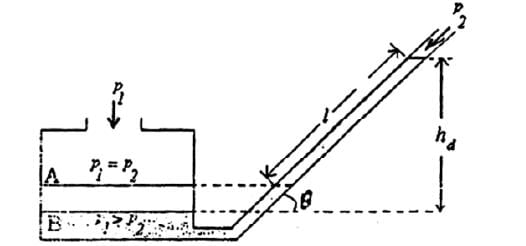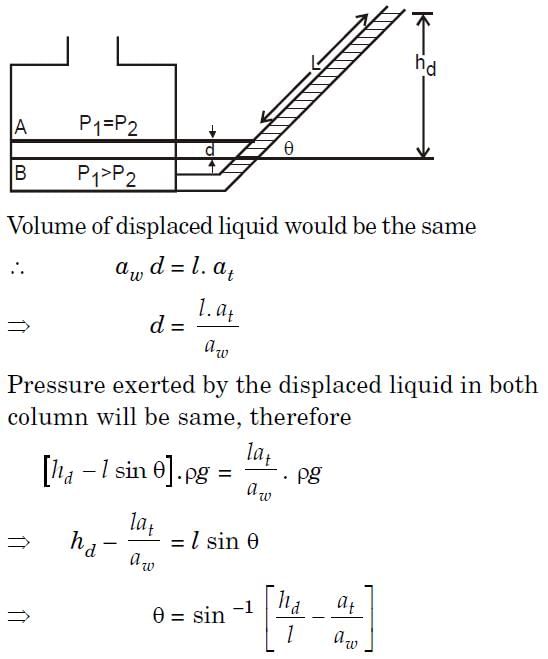Test: Measurement of Pressure - GATE MCQ
15 Questions MCQ Test - Test: Measurement of Pressure
The liquid in a manometer has a specific weight of 8.5 kN/m3. If the liquid rises 83 cm higher in the lower pressure leg, what is the difference in the pressure between the higher and the lower legs?
What is the liquid density in a manometer, if the difference in the liquid levels in the manometer tubes is 1.35m, and the differential pressure between the tubes is 7.85 kPa?
A well of cross-sectional area aw is connected to an inclined tube of cross-sectional area at to form a differential pressure gauge as shown in the figure below. When p1 = p2 the common liquid level is denoted by A. When p1 > p2, the liquid level in the well is depressed to B, and the level in the tube rises by l along its length such that the difference in the tube and well levels is hd.

The angle of inclination  of the tube with the horizontal is:
of the tube with the horizontal is:
The diameter of an aluminium sphere is found to be 50 mm at atmospheric pressure of 105 Pa. The bulk modulus for aluminium is 68.6 GPa. The change in the diameter of the sphere in microns, when placed in a vacuum is
A pressure sensor has the following specifications. Sensitivity at the design temperature
= 10 V/MPa, Zero drift = 0.01 V/°C, Sensitivity drift = 0.01 (V/MPa)/°C When the sensor is used in an ambient 20°C above the design temperature, the output from the device is 7.4 V. The true value of the pressure will be
A piezoelectric type 50 MPa full-scale pressure sensor with built-in electronics has a sensitivity of 100 mV per MPa. If this sensor is subjected to a static pressure of 10 MPa then its output will be
A piezoelectric type pressure sensor has a sensitivity of 1 mV/kPa and bandwidth of
300 Hz to 300 kHz. For a constant (dc) pressure of 100 kPa, the steady-state output of the sensor in millivolt is
In which of the following categories is thin plate diaphragm included?
Which of the following devices convert pressure to displacement?
What is the difference between water and transformer oil as a manometric liquid?
Which of the following is detected using manometer devices?
Which of the following conversions take place in bourdon tubes?Options
In bellows pressure to displacement conversion takes place.


















